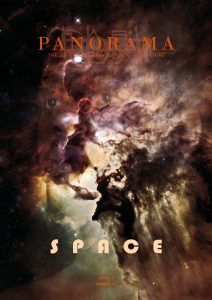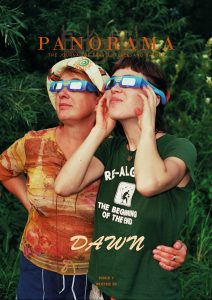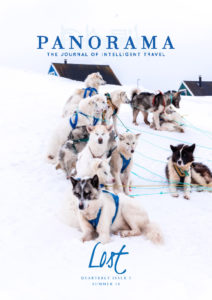I got into travel writing accidentally: it’s not something I intended to do, but a series of circumstances happened which made me into a travel writer. But from the start, I found the genre lacking: it seemed controlled by narratives which were rife with exoticism, commercialism, and outdated perspectives. I realised there was room for lots of different approaches to travel writing, but I wondered what travel literature made up the backbone of the genre. So a few years ago, I decided to ask many of the famous travel writers I knew to send me a list of their favourite travel-themed books. As the lists came in, I noticed three things: one, the authors were mostly white men; two, the majority of the authors were from Western countries; and three, there were very few books of poetry or fiction included.
I read every single book that was recommended to me, and enjoyed them. But I wondered why the lists did not include books by non-Western writers, non-binary writers, women, and people of colour—or even include types of expression outside of nonfiction, when travel literature was supposed to be about our whole world, not just part of it. These discrepancies led me to dive into travel literature deeply, in an attempt to try to decipher why the genre was seen and even celebrated, in such a rarified and exclusive way. I discovered that travel literature was everywhere, written by everyone—yet what was published and promoted most was not: it was by a precious few. Why would ‘popular’ travel literature only be written by a few people, from only a few countries? What had happened to create the issues in genre we have now? Who controlled the genre in the past and today? Who was writing it? Who was reading it—and why? Could it be changed?
Travel literature itself was not born in the West. It has a heady history, and it was written by both men and women—mostly people of colour. Whether artisan, missionary, political dissident, slave, student, teacher, monk, soldier, sailor, courtesan, royal, or merchant, these travellers created the bones of the genre we have now. Travel wasn’t necessarily about travelling long distances or transformational narratives; instead, it was about mapping our landscapes and oceans, charting territories, political intrigue, natural history, and tales of caution and morality. Storytelling took the forms of poetry, lists, graffiti, oral histories, fairy tales, and on occasion, travelogues as we know them today. One of the earliest examples of travel writing is the 40 year travel diary of a royal household court member, Takasue’s Daughter, Sarashina nikki, which was written between 1020 and 1060. Leaping ahead to the mid-Renaissance, we have the example of the Muslim travel writer Al Hassan Ibn Muhammed Al Wazzan. His diaries and letters tell a travel tale which began with exile as child from Spain, and continued throughout the early 1500s as an envoy to the sultan of Fez.
Up until that point, travel was associated with necessity and only sometimes, privilege. But travel writing as we think of it today in the West has its roots in the Georgian and Victorian eras, periods when their preoccupation with what they saw as the ‘otherness’ of cultures different to their own became a theme in cartography, literature, and art. With the Victorians, the West firmly grasped onto the genre and didn’t let go: travellers of that time looked at travel as ‘exploration’—and the cost of ‘discovering’ something as they defined it ruined countless cultures and places due to their prescriptive colonialist attitudes. We have a handful of exceptions to admire, such as Mary Wollstonecraft, in her Letters from Sweden, Norway, and Denmark, published in 1796; Margaret Catchpole, imprisoned for prostitution and theft, who wrote Letters from an Australian Prison at the time of English colonisation in the 1800s; and Fanny Parks, who was sympathetic to the loss of culture and tradition in Afghan and Indian society, and wrote about it 1850. (William Darymple later republished her work under the title, Begums, Thugs, and Englishmen: The Journals of Fanny Parks.)
This was also the period of the Grand Tour, when travel in the West began taking on the robes of status, and more importantly, decorated those robes with self-knowledge, using exploitation and societal factors to create a veritable ‘cult of travel.’ The Grand Tour coincided with continued narratives of adventure and exploration, and thus the Western transformative travelogue was born. While still dominated by white writers, there were many glorious exceptions, including Ada Blackjack, an Inupiat Inuit, who was left stranded alone on Wrangel Island in Siberia in the 1920s, and whose diaries were published. And Juanita Harrison, an African American, who travelled the world and wrote about experiencing place as a woman of colour in her book, My Great, Wide, Beautiful World in 1936. While some writers of colour took on the Grand Tour, such as Langston Hughes and Caryl Philips, they were rare exceptions.
But what else was happening outside of the West during this recrafting of the genre—a period of several hundred years? The answer is that people, everywhere, were travelling, and they were recording it, through oral and written histories, just as they always had. In fact, people outside the West travelled more than people in the West: travel was a daily activity. People led nomadic lives, travelled for work, for festivals, for pilgrimages, for pleasure, for education, and for survival. So travel literature—and travel—are not Western ideas, despite the vast tome of literature we focus on that encourages us to believe otherwise. Both travel and travel literature were simply co-opted by people who had the power within their own culture to redefine what travel was for people just like them: they decided who could be seen as a traveller, and how a journey would be both recorded and defined. Because they had that power, it meant the majority of other narratives about travel by people not like them were not seen as valid—just like today.
When you think about travel and travel writing in this way, you realise that how we view these things right now is actually very new, and moreover, very temporary—we’ve only been using this model for a few hundred years, yet we can access travel literature that is a thousand years old, or more. The world we live in today no longer desires the ‘explorer’ as defined by the past; the new explorer is someone who discovers things right where they are, not in some far off land. Unlike the need we had in the past for narratives which would help us map our world, travel literature now has a different primary responsibility: that of helping us understand one another. Travel literature is ready to return to our roots of poetry, fiction, hybrid works, complex layered memoirs, and our imagination. The West no longer dominates events and perspectives, and the cornucopia of diversity that we have instantly available means we can fully embrace a panoramic world view.
And so I introduce Panorama: The Journal of Intelligent Travel to you. Our first issue is designed to show our readers new ways to think about places, cultures, differences—and even redefine what travel can be, through carefully curated works of fiction, nonfiction, poetry, and imagery which span the globe. Of great importance to us has been our commitment to diversity, with a masthead of 60% writers and creatives of colour, including more than 20 emerging writers, and more than 40 countries represented.
From Pauline Chizane’s fictional travelogue inspired by Mozambican athlete Maria de Lurdes Mutola, to Dato Magradze’s poem about his native Georgia, which touches on politics and restricted movement, to Farshid Tighehsez’s photographs of Lake Urmia, Iran, our first issue explores the idea of beginnings, of something new, extraordinary, necessary, timely, and divined. This is a publication to savour, to consider carefully, to shift things in you and in us, and most of all, to change the future of travel literature and imagery.
Welcome to our panoramic revolution.
Amy Gigi Alexander
Editor-in-Chief









